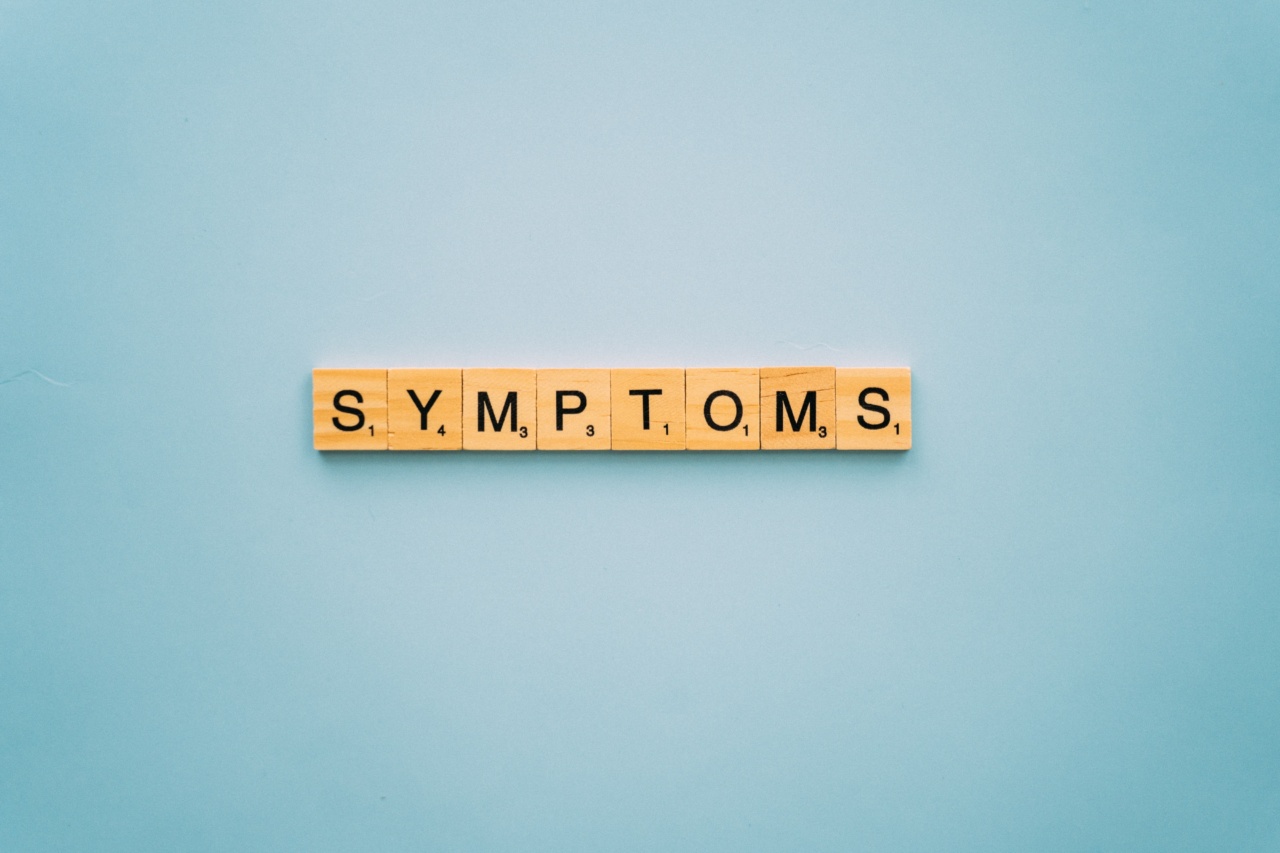Hemorrhoids, also known as piles, are swollen veins in the anal and rectal area. They can range in severity from mild discomfort to severe pain. Understanding the signs and symptoms of hemorrhoids is essential for early diagnosis and proper treatment.
In this article, we will explore the various stages of hemorrhoids, their causes, and available treatment options.
1. Itching and Irritation
One of the first signs of hemorrhoids is itching and irritation in and around the anus. This discomfort can be persistent and may worsen during bowel movements. The itching sensation is caused by the inflammation of the hemorrhoidal veins.
2. Bleeding
Blood in the stool or on toilet paper after wiping is a common symptom of hemorrhoids. The blood may appear bright red or maroon in color and is usually seen during or after bowel movements.
Hemorrhoids can cause small tears in the delicate tissues of the anus, resulting in bleeding.
3. Discomfort and Pain
Hemorrhoids can cause varying degrees of discomfort and pain. This may include a feeling of fullness or pressure in the rectal area. Pain can also occur during bowel movements or while sitting for extended periods.
External hemorrhoids, which develop outside the anus, tend to be more painful than internal ones.
4. Swelling and Inflammation
The veins affected by hemorrhoids can become swollen and inflamed, leading to visible lumps or bulges around the anus. These swollen veins can cause discomfort and difficulty in maintaining proper hygiene.
In severe cases, the swelling may cause difficulty in sitting or moving comfortably.
5. Prolapse
In advanced stages, internal hemorrhoids may protrude or prolapse outside the anus. This can happen during bowel movements or when applying pressure during physical activities. Prolapsed hemorrhoids can be painful and may require manual reduction.
6. Mucus Discharge
Hemorrhoids may cause excessive mucus production in the anal area. This can result in a constant feeling of moisture or wetness around the anus. The presence of mucus can further contribute to itching and discomfort.
7. Difficulty with Bowel Movements
Hemorrhoids can make bowel movements more challenging, especially if the stool is hard and difficult to pass. Straining during bowel movements can worsen the hemorrhoids and cause increased pain and bleeding.
The fear of pain and discomfort may also lead to constipation as individuals avoid frequent bowel movements.
8. Thrombosis
In some cases, blood clots may form within the hemorrhoidal veins. This condition, known as thrombosed hemorrhoids, can cause severe pain and swelling. The affected area may appear bluish-purple in color and feel extremely tender.
Thrombosed hemorrhoids often require immediate medical attention.
9. Changes in Bowel Habits
Hemorrhoids can affect bowel habits, leading to both constipation and diarrhea. If the presence of hemorrhoids causes discomfort or pain during bowel movements, individuals may suppress the urge to defecate, leading to constipation.
On the other hand, inflammation and irritation caused by hemorrhoids can result in loose stools and frequent bowel movements.
10. Recurring Symptoms
Individuals with hemorrhoids often experience recurring symptoms, especially if the underlying causes are not addressed.
Without appropriate treatment and lifestyle modifications, hemorrhoids can continue to develop, worsen, and cause persistent discomfort and pain.
If you notice any combination of the above signs and symptoms, it is important to consult a healthcare professional for an accurate diagnosis and appropriate treatment plan.































